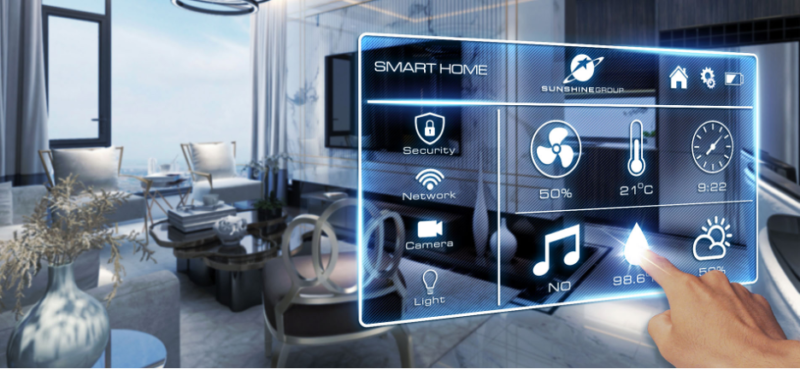As we step into an era where technology seamlessly integrates into our daily lives, smart home security automation emerges as a pivotal trend. This technology not only promises enhanced safety but also offers homeowners and businesses the convenience of managing security with just a few taps on their devices. But what exactly is driving the rapid adoption of these systems, and how can they be effectively implemented? Let's delve deeper into the world of smart home security.

Understanding Smart Home Security
In recent years, the concept of a smart home has evolved from a futuristic idea into a tangible reality. With advancements in technology, homeowners and businesses can now automate and control various security elements remotely. This includes everything from surveillance cameras to motion sensors and alarm systems.
The core of smart home security automation lies in its ability to create an interconnected network of devices. This network can be accessed and controlled through a central hub, often a smartphone app. The ease of use and the comprehensive nature of these systems make them a popular choice among tech-savvy users.
The Benefits of Automation in Home Security
One of the primary benefits of smart home security automation is the ability to monitor and manage security systems from virtually anywhere in the world. Whether you're on vacation or at the office, you can ensure that your home or business is secure.
Moreover, these systems are designed to be intuitive. They can learn your routine and adapt accordingly. For instance, smart lights can mimic your presence at home even when you're away, deterring potential intruders. Additionally, integrating solar-powered smart devices can further enhance the efficiency and sustainability of your smart home system.
Implementing Smart Security Solutions
For those new to the realm of smart technology, installing a smart home system might seem daunting. However, with the right guidance, the process can be straightforward. Start by identifying the key areas in your home or business that require security. This could be entry points like doors and windows or more secluded areas like backyards.
Once you've identified these areas, select devices that best suit your needs. This could include cameras with night vision, motion detectors, or even smart doorbells that offer video capabilities. It's essential to ensure that these devices are compatible with each other and can be integrated into a cohesive system.
Challenges and Considerations
While the benefits of smart home security automation are undeniable, there are certain challenges that users must be aware of. One of the primary concerns is cybersecurity. With devices connected to the internet, there's always a risk of data breaches. It's crucial to regularly update device firmware and utilize strong, unique passwords. You can learn more about password safety for smart devices to safeguard your system.
Another consideration is the cost. While prices for smart devices have become more affordable, setting up a comprehensive system can still be a significant investment. However, the peace of mind and convenience they offer often outweigh the initial costs.
The Future of Smart Home Security
The future of smart home security automation looks promising. With continuous advancements in AI and machine learning, these systems are becoming more efficient and intuitive. Imagine a home that can predict potential security threats and alert you even before they occur. As technology evolves, so will the capabilities of smart home security systems.
Furthermore, as the demand for sustainable solutions grows, integrating renewable energy sources like solar power into these systems could become commonplace. This not only reduces the environmental impact but also ensures that your security system remains operational even in power outages.
Conclusion
In conclusion, smart home security automation is revolutionizing the way we think about home and business security. By offering convenience, efficiency, and advanced protection, it's no wonder that more homeowners and businesses are turning to these systems. As technology continues to evolve, those who embrace smart security solutions today will be well-equipped for the challenges of tomorrow.

FAQ
1. What are the key components of a smart home security system?
A smart home security system typically includes surveillance cameras, motion detectors, smart locks, and alarm systems. These components are interconnected and can be controlled via a central hub or smartphone app.
2. How can I ensure the security of my smart home system?
To ensure the security of your smart home system, regularly update device firmware, use strong, unique passwords, and be cautious of potential hacking threats. For more tips, check out our guide on privacy settings for voice assistants.
3. Are smart home security systems expensive?
While the initial setup of a smart home security system can be an investment, the long-term benefits in terms of security and convenience often justify the cost. Prices vary based on the complexity and features of the system.
